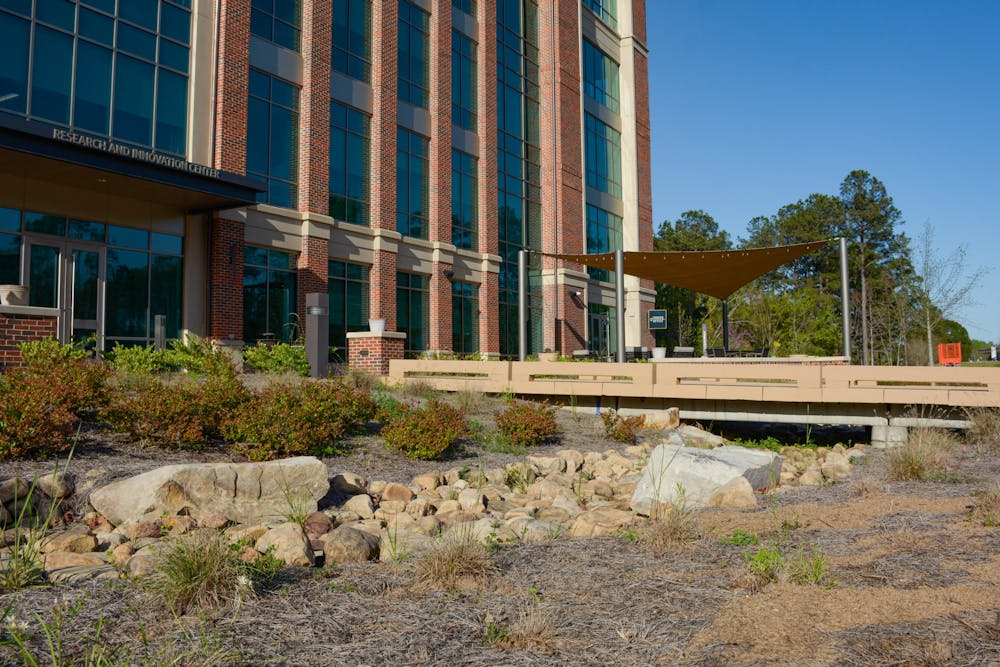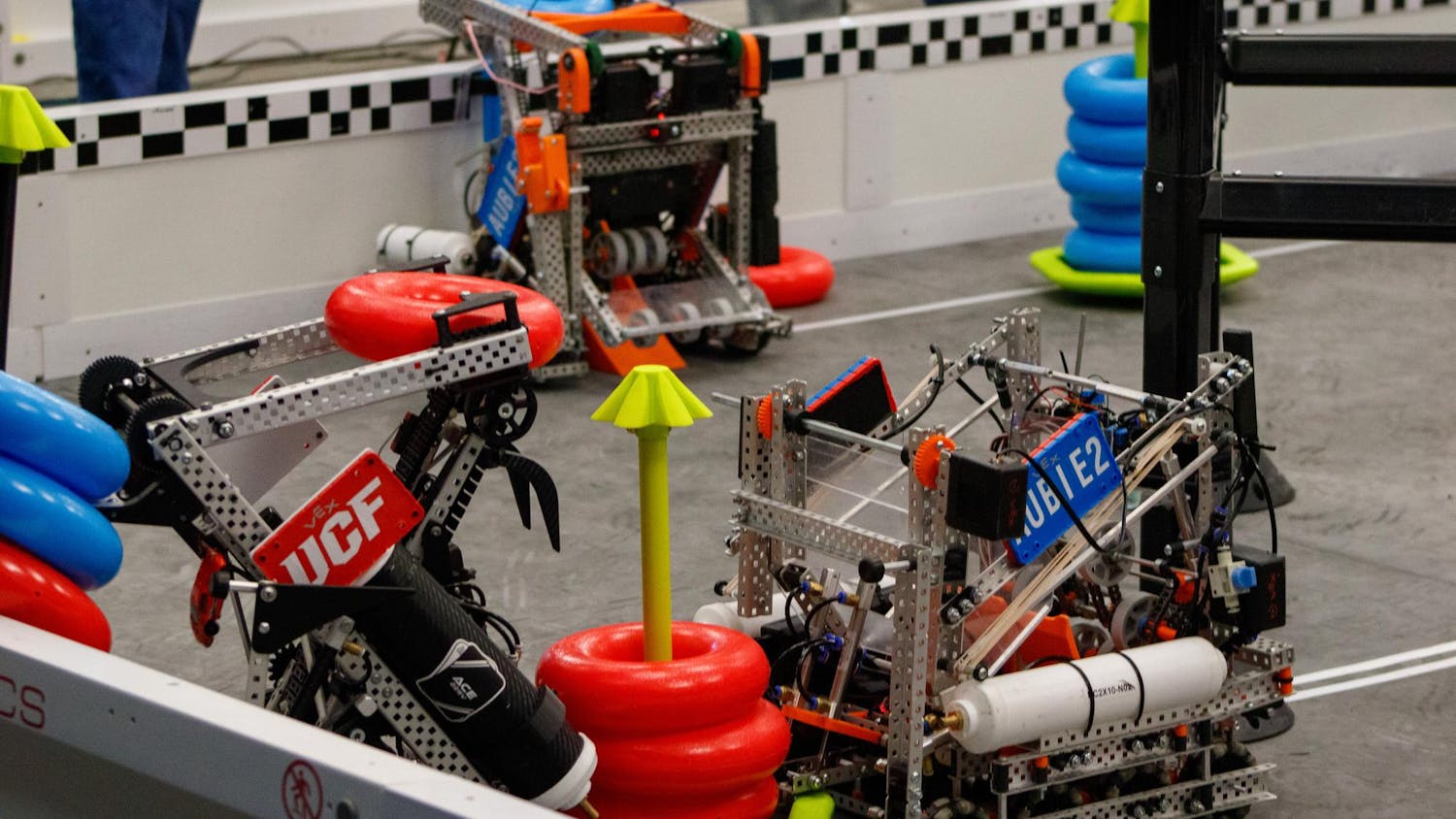Though it may not be obvious, Auburn University has committed to sustainability across campus in many hidden-in-plain-sight and often not-thought-about ways.
Auburn University has been working to make everyday aspects of campus extraordinary through subtle changes that make large impacts to the effect campus has on the environment it exists in.
One aspect of sustainability students, faculty and visitors interact with every day on campus without realizing it is Auburn's stormwater management system. The part of this system most interacted with is the concourses and walkways across campus.
The bricks on many of the concourses are designed and constructed so the surfaces are permeable, or allow water to pass through to the soil below. Sand, gravel and other fillers are used instead of the usual grout and mortar so the space between the bricks can absorb rainwater.
“[Auburn University has] included more efforts to manage stormwater the way nature does,” said Mike Kensler, office director of the Auburn University Office of Sustainability.
The overall risk of flooding and pollution can be reduced by allowing the water to absorb into the soil instead of traveling through the sewer system and to streams, creeks, rivers and other bodies of water.
Another feature in the stormwater management on campus includes bioswales. The Merriam-Webster Dictionary defines bioswales as “a long, channeled depression or trench that receives rainwater runoff (as from a parking lot) and has vegetation (such as grasses, flowering herbs, and shrubs) and organic matter (such as mulch) to slow water infiltration and filter out pollutants.”
Bioswales are located across campus, such as the one in front of the Mell Classroom Building, the courtyard at Foy Hall and in several areas around the Auburn University Research Park. In the Corley courtyard, a research program is capturing rainfall from the roof and channeling it into a storage tank where it is stored and used on the greenery around the courtyard.
“The campus is a living laboratory to experiment and do stuff,” Kensler said.
Auburn University isn’t just focusing on aspects of sustainability outside. Auburn has committed to every new building being at least LEED (Leader in Energy & Environmental Design) Certified Silver.
The LEED rating system began in the 1990s and was developed by the U.S. Green Building Council (USGBC) as a way to measure a building’s energy efficiency and environmental impact. LEED Silver is the third out of four levels of certification.
According to a study by the Harvard School of Public Health, LEED-certified buildings are not only better for the environment but also produce a 26% improvement in cognitive ability and a 30% reduction in sick building syndrome. Sick building syndrome is a condition that affects people who spend a lot of time in an office or office-like environment and experience symptoms like respiratory problems and headaches that are attributed to unhealthy and stressful factors in the working environment such as poor ventilation.
“The buildings we’re building are more environmentally responsible and they’re much better for human health and performance,” Kensler said.
The College of Education buildings under construction on West Samford Avenue were designed for LEED Gold Certification, but the certification can not be confirmed until the buildings have been completed and inspected.
Food insecurity is part of the Sustainable Development Goals set by the United Nations and Auburn is working to address food insecurity on campus. Auburn’s Hunger Studies Program in the College of Human Sciences works internationally to address food insecurity.
Students on campus who face food insecurity can visit the Campus Food Pantry located in Lupton Hall.
Kensler explained that though enough food is produced to feed everybody, much of it is thrown away because of imperfections, irresponsible food growing methods and uneaten food being thrown away.
“There’s plenty of food to feed everybody, but a lot of it doesn’t get to people,” Kensler said.
One highly visible, yet often not recognized, aspect of sustainability at Auburn is the Tiger Transit system. The system is made up of 22 routes that run 57 total buses, 10 of those being diesel-electric hybrids. Tiger Transit also runs three vans, two of which are fully electric.
Chris Harris, Tiger Transit director, estimated that there are nearly 14,000 daily riders. This daily ridership equates to somewhere between 5,000 to 6,000 private vehicles being removed from the roads around Auburn and the parking lots on campus.
By reducing the need for personal vehicle usage, Auburn can reduce the amount of emissions produced, reduce the congestion on city streets and use more of Auburn’s campus for greenspace or educational facilities.
One thing to note about Tiger Transit’s hybrid buses is that they are geofenced so that while on Auburn’s campus, they operate in an electric-only mode which helps to reduce emissions while on campus.
“As long as we keep all that at the forefront, we’ll keep Auburn, Auburn,” Harris said.
Fully electric buses are being considered for the Tiger Transit fleet, but Harris noted that Auburn does not believe they are ready yet for the routes and patterns of use that Auburn currently needs.
Auburn is experimenting with many other methods to be more sustainable, including an upcoming composting program and the largest green roof in Alabama between the Brown-Kopel Engineering Student Achievement Center and Gavin Engineering Research Laboratory.
Students can learn more about Auburn’s sustainability efforts and upcoming sustainability events by following the Office of Sustainability on social media @AUSustain.
Do you like this story? The Plainsman doesn't accept money from tuition or student fees, and we don't charge a subscription fee. But you can donate to support The Plainsman.





